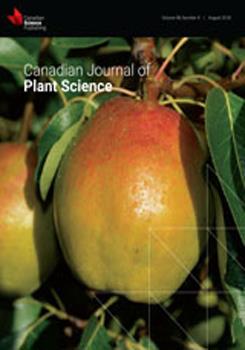Adjusting the crop load of European pears (Pyrus communis L.) by hand thinning is currently required to ensure marketable size of most cultivars grown in Ontario. The benefits of thinning pears chemically and its effect on fruit quality and fresh-market returns were investigated in a 3-yr study where a series of foliar chemical thinning sprays were applied during the 10-mm fruitlet stage to Bosc and Cold Snap™ pear trees growing in commercial orchards in the Niagara Peninsula, Ontario. Treatments included an untreated and hand-thinned control and two concentrations each of 6-benzyladenine (6-BA; 75 and 150 mg L-1), naphthalene acetic acid (10 and 20 mg L-1), 1-aminocyclopropane carboxylic acid (150 and 300 mg L-1), and s-abscisic acid (s-ABA; 150 and 300 mg L-1). Overall, all thinning products reduced crop load at least once in the 3-yr study, although this varied by year and cultivar. Higher concentrations were more effective than lower concentrations. Naphthalene acetic acid (both rates), 150 mg L-1 of 6-BA, and 300 mg L-1 of s-ABA were the most consistent at thinning the crop. As the crop load of control trees was not heavy, minimal hand thinning was required and all thinning treatments reduced crop value compared with the untreated trees. There were minimal effects on starch hydrolysis, soluble solids, fruit firmness, and skin colour at harvest.
How to translate text using browser tools
4 December 2017
Response of Bosc and Cold Snap™ pears to thinning with NAA, 6-BA, ACC, and s-ABA
J.A. Cline,
K. Carter,
A. Gunter,
C. Bakker,
A.C. Green
ACCESS THE FULL ARTICLE
It is not available for individual sale.
This article is only available to subscribers.
It is not available for individual sale.
It is not available for individual sale.
chemical thinning
crop load management
plant bioregulators
Pyrus





